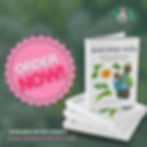What’s the Difference Between African and Western Herbalism? A Clear, Modern Breakdown
- KhadiYah
- 1 day ago
- 8 min read
Updated: 17 hours ago
History • Methods • Plants • Worldview
When people talk about “herbal history,” they usually start in Greece. But long before European herbalists put ink to parchment, Africa already had medical texts, trained healers, and documented plant knowledge.
Egyptian records like the Ebers Papyrus (written around 1550 BC but based on older materials) list hundreds of plants, remedies, poultices, and formulas. Ethiopia has its own long trail of medical manuscripts used by priests, midwives, and herbal practitioners — many of which are still referenced today.
The herbal term “flower essence” actually comes from early Egyptian ideas around the “scent” or “breath” of a plant. The smell, the color, the texture, and the place where the plant grew all communicated something about what the plant was sent to do.
How African Herbalists Used Plants

African herbalism is hands-on.
It’s earthy.
It uses the plant the way Yah designed it — with the leaf, root, bark, color, scent, and even the soil it grew from still speaking.
Traditional methods often included:
Poultices (crushed fresh plants applied directly to the body)
Decoctions (long-simmered roots and barks)
Infusions and teas
Steams (for lungs, sinuses, cleansing)
Smoke/Resin fumigation
Herbal baths
Pounded roots and pastes
Capsules, tincture droppers, and measured pills are modern conveniences — not traditional African practice. African healers wanted the plant alive, intact, and carrying its full expression.
If you’re new to African herbalism and want a deeper foundation first, you can read
to understand how these traditions connect to our healing today.

Plant Characteristics: How African Herbalists “Read” a Plant
Western herbalism tends to ask: What compound makes this work?
African herbalism asks deeper questions:
Where does this plant grow?
What struggle does it survive?
What color does it carry?
What shape is it speaking through?
What season does it thrive in?
Yah encoded messages into creation, and our ancestors paid attention.
Examples:
A plant growing in swamps or near water was often used to promote circulation and reduce edema.
Red plants or roots were frequently used for blood conditions.
Bitter plants were used to cleanse and purge.
A plant that clings tightly to the earth might be used to “ground” a person emotionally.
Plants with milky sap were used for conditions involving fluids, breast milk, or lubrication.
This way of seeing became known (in Western terminology) as the Doctrine of Signatures, but Africans didn’t need that label. They simply watched creation and obeyed the patterns they saw.
Healing Through Color, Scent, and Sound
Another difference: African herbalism never treated healing as only physical.
Colors mattered.
Scent mattered.
Rhythm, drumming, and tone mattered.

In many African traditions:
Yellow plants were used to uplift mood or awaken the mind.
Green leaves symbolized life and were used for cleansing and restoring strength.
Resins like myrrh and frankincense were burned for spiritual and emotional alignment.
Music, chanting, and rhythm were used to bring the body into harmony during healing.
Western herbalism often removes the sensory experience.
African herbalism sees the senses as part of the medicine.
If you want to dive deeper into African Herbalism and African Traditional plants,
>>>>> Grab my Top 5 African Herbs Download! <<<<<
African Herbalism: Ancient Records, Ancient Systems
Before Western herbalism even existed, Africa already had medical texts, trained healers, and organized systems of plant medicine.
Egyptian Records
Egypt left some of the oldest written medical documents in human history.
Ebers Papyrus (1550 BC) – over 700 plant formulas
Edwin Smith Papyrus – surgical and trauma medicine
Kahun Gynecological Papyrus – women’s health + birth
These texts recorded poultices, tincture-style extractions, fumigation, steams, vaginal suppositories, and plant-based wound treatments that modern medicine still recognizes.
Ethiopian Records
Ethiopia preserved medical manuals through monasteries, priests, and family lineages. Many of these texts are still used today.
They reflect:
herbal formulas
spiritual healing
musculoskeletal treatments
digestion and fever remedies
postpartum and newborn care
I talk more about why this approach is so important for us as African Americans in my blog
It gives more context on why reclaiming this knowledge matters right now.
Plants Commonly Used in African Herbalism

Some herbs with African origins and long traditional use include:
Grapple Plant (Harpagophytum) – joints, inflammation (read the blog on it here)
Hibiscus (Roselle) – blood pressure, digestion
Moringa – nourishment, blood sugar, lactation
Kinkeliba – liver + lymph support
African Wormwood (Artemisia afra) – respiratory health
Honeybush + Rooibos – endocrine + antioxidant support
Baobab – gut + immune support
These herbs reflect environments with heat, scarcity, and the need for resilience.
If you want to dive deeper into African Herbalism and African Traditional plants,
>>>>> Grab my Top 5 African Herbs Download! <<<<<
Western Herbalism: A Very Different Story
Western herbalism developed in a completely different climate—literally and philosophically.
Western Herbal Records
Western herbalism begins much later than African systems:
Dioscorides (1st century AD) – De Materia Medica
Hildegard of Bingen (1100s)
Culpeper’s Herbal (1600s)
European monastic herbals
These were organized, plant-focused, and centered around classification—but not spirit, color, or environment.

Western Herbal Philosophy
Western herbalism tends to:
isolate “active ingredients”
measure dosage precisely
reduce plants to their biochemical parts
view the body mechanically
prioritize pathogenic theory over energetic theory
This approach mirrors Western medicine’s desire to categorize, dissect, and control.
If the scientific piece interests you, you’ll love the clinical teachings inside my textbook
I break down phytochemistry, body systems, and how African herbalism and Western science actually complement each other.
Western Preparations
capsules
alcohol tinctures
standardized extracts
essential oils
salves
tablets and glycerites
The focus was on efficiency and measurable outcomes.
Plants Commonly Used in Western Herbalism
Western herbalism relies heavily on plants from temperate climates:
Peppermint – digestion
Chamomile – relaxation
Yarrow – wound care
Nettle – iron, minerals
Valerian – sleep
St. John’s Wort – mood + nerve pain
Echinacea – immune support
Red Clover – lymphatic support
These plants reflect shorter seasons, cooler climates, and different physical stressors.
Bringing It All Together

As an African American living in the United States, I sit in a very specific place when it comes to herbalism. My work at Yah’s Apothecary isn’t about choosing African or Western approaches — it’s about understanding both, respecting both, and using them wisely. African herbalism gives us the art, the patterns, the signatures, and the spiritual grounding that our ancestors lived by. Western herbalism gives us the science, the phytochemistry, and the clinical language that helps us explain what our ancestors already understood through observation and relationship.
There are strengths and weaknesses in each. African herbalism teaches us to look at creation with reverence — to notice color, shape, season, and environment, and to see Yah’s design in every detail. Western herbalism teaches us how to measure, test, document, and name the compounds that carry the actions our people already knew by experience.
When you blend the two, you gain a fuller toolkit.
You have the structure and clarity of science, but you also have the intuition, cultural memory, and spiritual grounding of the tradition. One is not meant to erase the other.
Inside the Student Membership Vault, I teach this exact blend—African energetics, clinical anatomy and physiology, safety levels, and real-world application. It’s where you get the structure most people never had access to.
And when we look at the plants themselves, the difference makes sense. Western herbalism grew out of shorter seasons and cooler climates, which shaped the kinds of herbs they depended on — peppermint, yarrow, chamomile, nettle. Their needs were different, their environment was different, and their healing reflected that.
African herbalism came from heat, sun, drought, abundance, and struggle, and the plants reflect that too — hibiscus, moringa, African wormwood, baobab, kinkeliba. The Creator designed plants to meet the needs of the people and the land they lived in.
That’s why, at Yah’s Apothecary, we teach African herbalism for modern times. We honor the signatures, the senses, the patterns, and the connection to Yah. But we also use clinical language, safety levels, phytochemistry, and systems-based thinking — not to replace our tradition, but to strengthen it.
This is the kind of herbalism that brings you back to who you are, where you come from, and the wisdom Yah placed in both the land and the lineage. The goal isn’t to choose between African or Western herbalism — it’s to understand how Yah works through them both.
If today’s blog stirred something in you — that desire to learn the way our ancestors learned while also understanding the systems, safety, and science behind the herbs — then the next step is the Holistic Practitioner Elite Program.
This is where I teach African herbalism for modern times.
Not watered down.
Not stripped of its meaning.
Not separated from Scripture, systems, or safety.

Inside HPE, you’ll learn:
how to understand the body the way a practitioner should
how to choose herbs with intention, not guessing
how to read plants through both signatures and clinical actions
how to build real protocols
how to work with clients responsibly
and how to bring together tradition + modern herbal practice
It’s the most complete path we offer for women who know they’re called to this work.
If you want to go deeper into African-centered, biblically sound herbal training, our HPE semester starts in January. This is your window to prepare, pray, and step into the kind of training that will carry you, your family, and your community for years.
If you’re ready, apply now while doors are open.
Frequently Asked Questions
What makes African herbalism unique?
African herbalism sees the body as a whole, interconnected system. Organs are understood through the same energetics found in the skin, climate, and environment. This is why remedies for external bumps may also be used for internal cysts—everything in the body reflects everything else.
How is Western herbalism different?
Western herbalism leans heavily on clinical science, phytochemistry, isolated compounds, and Western anatomical models. It offers helpful precision and verification—especially when working with modern conditions—but it can become overly reductionist without cultural and energetic context.
Is one approach better than the other?
No. They serve different purposes. African herbalism brings history, spirit, climate awareness, and cultural wisdom. Western herbalism brings clinical clarity and scientific language. When you combine both, you become a stronger and more well-rounded practitioner.
Can I combine African and Western herbalism in my practice?
Absolutely. That’s what we teach at Yah’s Apothecary—African herbalism for modern times. We honor our ancestors while also understanding how herbs interact with the nervous system, endocrine system, digestion, and medications today.
Where can I study African herbalism in a structured way?
For beginners and intermediate learners, the Student Membership Vault gives you biweekly classes, protocols, plant lessons, and our herb safety frameworks. For those ready to go deeper and finally learn clinical-level herbal practice, the Holistic Practitioner Elite Program semester opens in January.
Are African herbs safe?
Yes, when used with proper knowledge. Many African herbs fall into Level 1 and Level 2 of our 4 Levels of Safety system, and you’ll learn how to classify herbs correctly, so you always choose safe, effective options.
About the Author
I’m KhadiYah Preciado, founder of Yah’s Apothecary™, a biblically grounded and African-centered herb school for Black women who are serious about becoming herbal practitioners. I’ve studied both African herbal traditions and clinical herbalism for years—learning the cultural, ancestral, and spiritual context of our healing practices while also studying anatomy, physiology, pathophysiology, and phytochemistry.
My work includes the T.E.A Method™, the 4 Levels of Safety™, the 3 Stages of Illness™, and the 7 Levels of Healing™—frameworks designed to help you understand herbs the way our ancestors did, while also practicing safely and confidently in today’s world.












